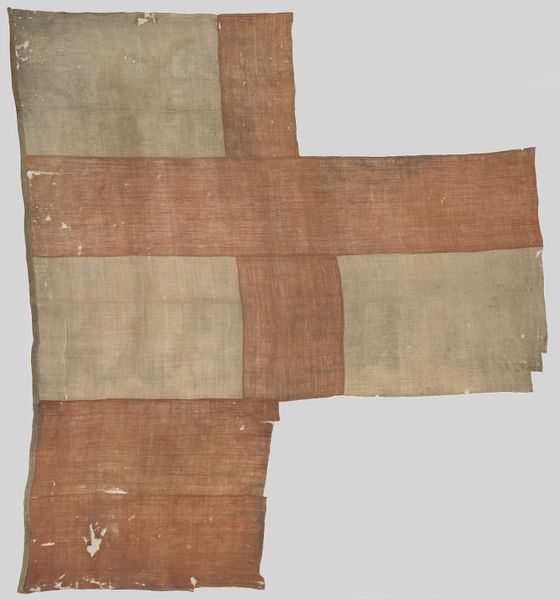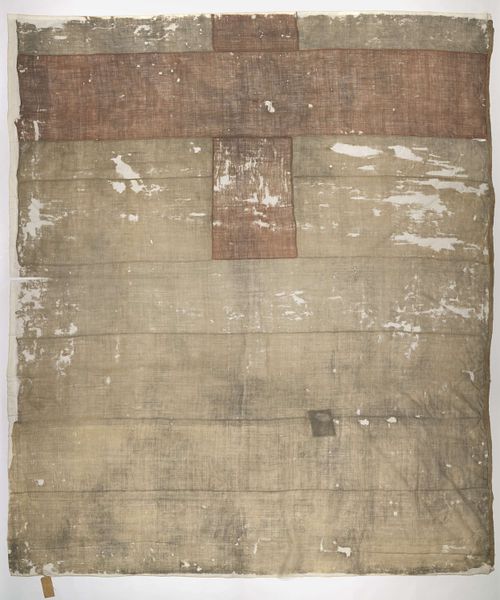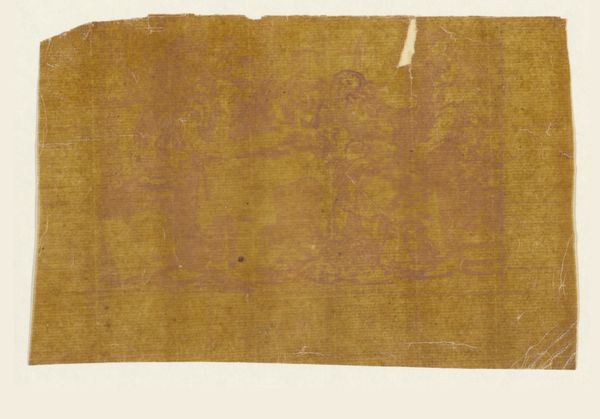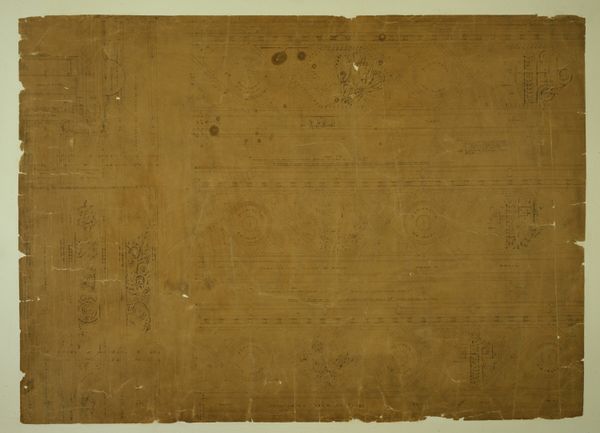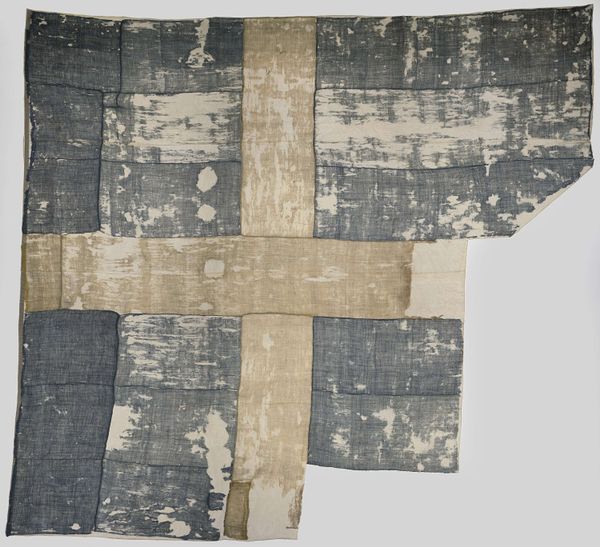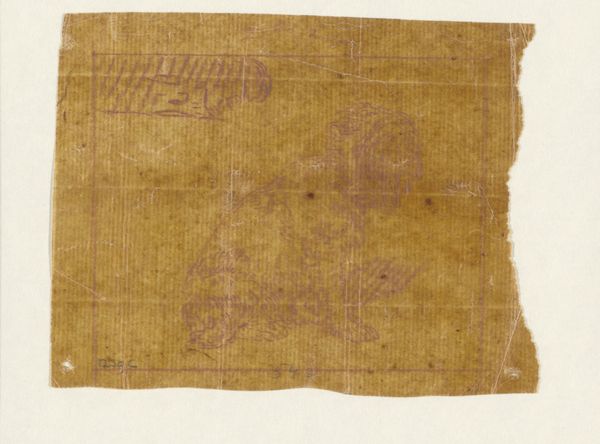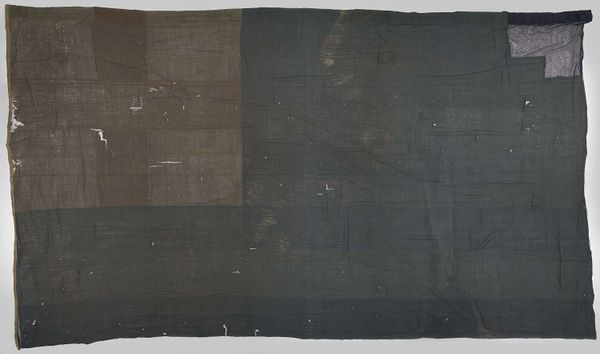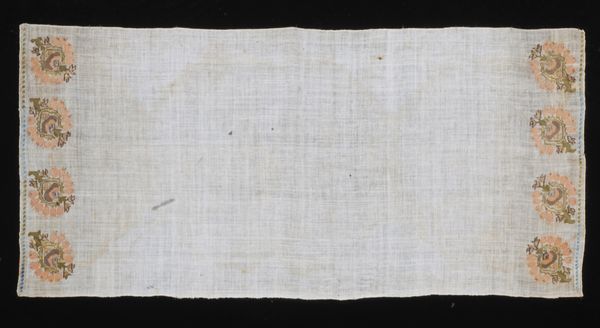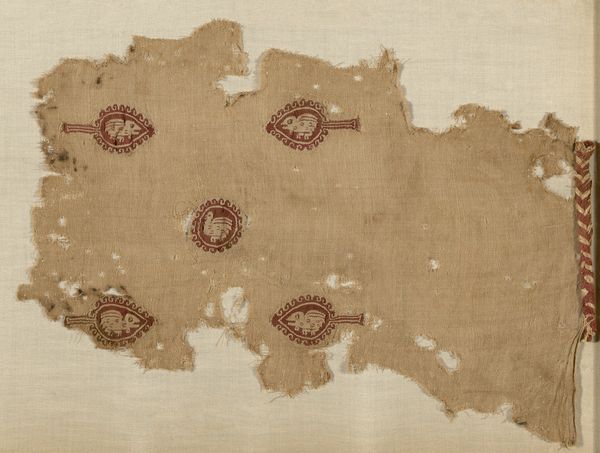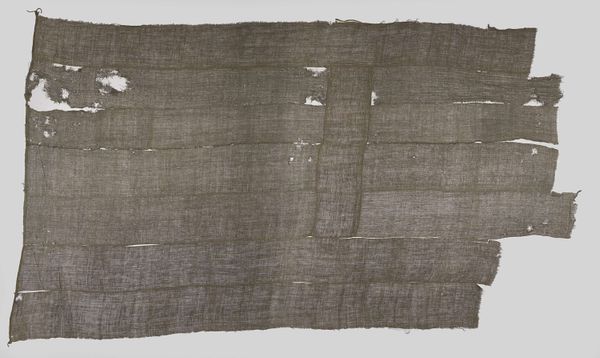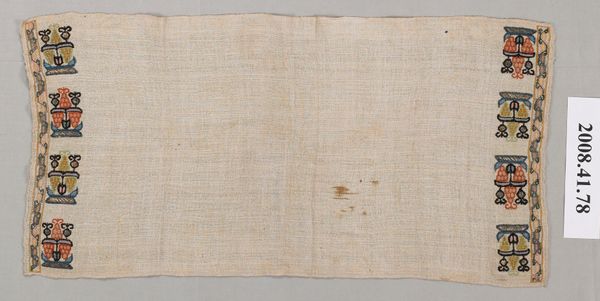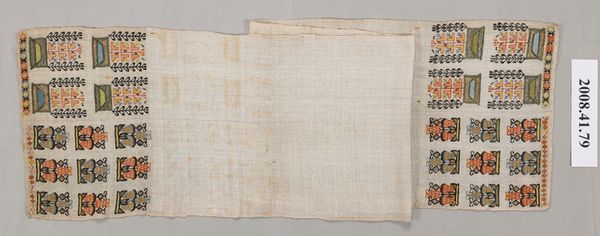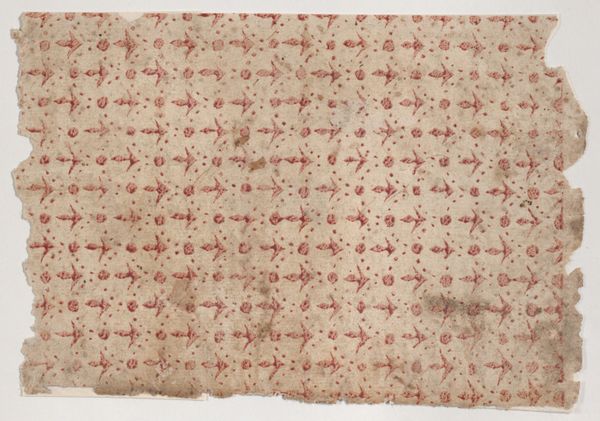
mixed-media, textile
#
mixed-media
#
worn
#
textile
#
paper texture
#
grainy texture
#
chalky texture
#
watercolour bleed
#
history-painting
#
organic texture
#
watercolor
Dimensions: height 396 cm, width 433 cm
Copyright: Rijks Museum: Open Domain
Editor: So, here we have a “Fragment of a Ship Flag,” dating roughly from 1630 to 1702, by an anonymous artist. It’s a mixed-media piece, mostly textile and watercolor, and it looks… aged. How do you interpret a piece like this? Curator: Well, immediately, my mind goes to the context in which flags operate. They aren’t just decoration; they’re symbols loaded with meaning, representing power, identity, and ideology. This fragmented flag, with its cross design, prompts questions about the social and political forces at play during its creation and use. Editor: What sort of questions? Curator: Considering the period, was it a symbol of a specific nation's naval power, or perhaps a mercantile flag? The fact that it's a fragment suggests a history of conflict, damage, or perhaps even defeat. Its survival as an artifact also raises interesting questions about preservation, memory, and national identity. Editor: It looks very worn. How would that inform its reading? Curator: The degradation is vital! Museums inherently sanitize history by preserving objects, yet this flag inherently resists that clean narrative. The "worn" aspect points directly to lived experience. The fade marks of its making become very important to contextualizing its role and "politics of imagery" which would include both conscious messages, but even, here, its subconscious communication of damage, ruin, perhaps decay. Editor: So the damage actually helps tell the story. Curator: Exactly! And prompts questions about which stories we choose to preserve and how. Whose narrative is being elevated and reinforced in the presentation of this work? Are we remembering conquest or the aftermath? Editor: That’s a perspective I wouldn’t have considered at first. Thanks! Curator: Indeed, it’s a stark reminder of how even seemingly simple objects can reflect complex social and political histories, continually prompting re-evaluation as it moves into future public consumption.
Comments
No comments
Be the first to comment and join the conversation on the ultimate creative platform.
